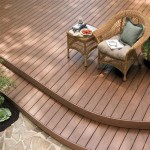Vinyl Plank Flooring: A Comprehensive Guide from Homebase
Vinyl plank flooring has become a popular choice for homeowners seeking a durable, stylish, and budget-friendly flooring option. Its versatility, ease of installation, and water resistance make it suitable for various rooms, from kitchens and bathrooms to living rooms and bedrooms. Homebase, a leading home improvement retailer, offers a wide selection of vinyl plank flooring to suit diverse needs and preferences. This comprehensive guide provides an in-depth exploration of vinyl plank flooring, its benefits, and installation process, helping you make an informed decision for your home.
Understanding Vinyl Plank Flooring
Vinyl plank flooring consists of individual planks that mimic the appearance of real wood, stone, or tile. These planks are typically made from a core of polyvinyl chloride (PVC) with a wear layer that protects the surface from scratches, stains, and fading. The wear layer can vary in thickness, affecting the flooring's durability and lifespan. Vinyl planks are available in various styles, colors, and finishes, allowing for a wide range of aesthetic possibilities.
There are three primary types of vinyl plank flooring:
- Luxury vinyl plank (LVP): This premium option features a thicker wear layer and a realistic wood or stone look, offering exceptional durability and longevity.
- Luxury vinyl tile (LVT): Similar to LVP, LVT mimics the appearance of tile, often with a textured surface that provides a more authentic feel.
- WPC (Wood Plastic Composite): WPC planks incorporate a core made from wood and plastic, resulting in a more rigid and stable flooring option.
Advantages of Vinyl Plank Flooring
Choosing vinyl plank flooring offers numerous benefits over traditional flooring options, including:
Durability
Vinyl plank flooring is highly durable and resistant to scratches, dents, and fading. The wear layer protects the surface from daily wear and tear, making it suitable for high-traffic areas. Its water resistance also makes it a popular choice for kitchens and bathrooms, where spills and splashes are common.
Water Resistance
Vinyl plank flooring is inherently water-resistant, making it an ideal choice for areas prone to moisture exposure, such as basements, kitchens, and bathrooms. Its waterproof nature prevents warping, swelling, and mold growth, ensuring a durable and hygienic flooring solution.
Ease of Maintenance
Vinyl plank flooring requires minimal maintenance. It can be cleaned easily with a damp mop and mild detergent, making it an excellent option for busy families. This low-maintenance nature saves time and effort compared to other flooring types that require specialized cleaning products and procedures.
Sound Absorption
Some vinyl plank flooring options feature an underlayment layer that provides sound absorption, reducing noise levels and creating a quieter living environment. This feature is particularly beneficial for multi-level homes or apartments, where noise transmission can be a concern.
Cost-Effectiveness
Compared to real wood, stone, or tile flooring, vinyl plank flooring offers a budget-friendly alternative. Its affordability makes it a feasible option for homeowners on a tight budget without compromising on style and performance.
Installation
Vinyl plank flooring is relatively easy to install, making it a DIY-friendly option for homeowners with basic skills. Click-lock installation systems allow for quick and simple assembly without the need for adhesives or special tools. However, seeking professional installation is recommended for larger areas or complex configurations.
Installation Process
Installing vinyl plank flooring involves several steps, typically including:
- Preparation: Before installation, the subfloor must be clean, smooth, and level. Any existing flooring needs to be removed, and any uneven areas should be addressed.
- Underlayment: An underlayment layer is typically installed beneath the vinyl planks to provide cushioning, noise reduction, and moisture protection.
- Plank Placement: Start laying the planks in the designated area, ensuring that they are tightly fitted together. Click-lock planks simply snap together, while glue-down planks require adhesive.
- Trimming and Finishing: Trim planks to fit around obstacles such as doorways, cabinets, and walls.
- Baseboards: Install baseboards to conceal the edges of the flooring and create a finished look.
Homebase offers a range of installation services, including professional installation, ensuring that your new vinyl plank flooring is installed correctly and efficiently. They also provide helpful resources and guides for DIY installation, empowering homeowners to complete the project themselves.

Rigid Core Luxury Vinyl Flooring Coastal Light Grey Plank Homebase

Brady Vinyl Flooring Oak Plank Effect 2x3m Homebase

Homebase Usa Vinyl Flooring Planks

Rigid Core Luxury Vinyl Flooring Classic Walnut Plank Homebase

Rigid Core Luxury Vinyl Flooring Natural Oak Herringbone Homebase

Homebase Usa Vinyl Flooring Planks

Plancs Oak Self Adhesive Vinyl Floor Plank 8 Piece Pack 1 11 Sqm Homebase

Rigid Core Spc Luxury Vinyl Flooring Coastal Light Grey Plank Homebase

Plancs Grey Oak Self Adhesive Vinyl Floor Plank 8 Piece Pack 1 11 Sqm Homebase

Raskin Big Sky Bsp 16 Flooring Plank 36 In L 6 W Sq
Related Posts








